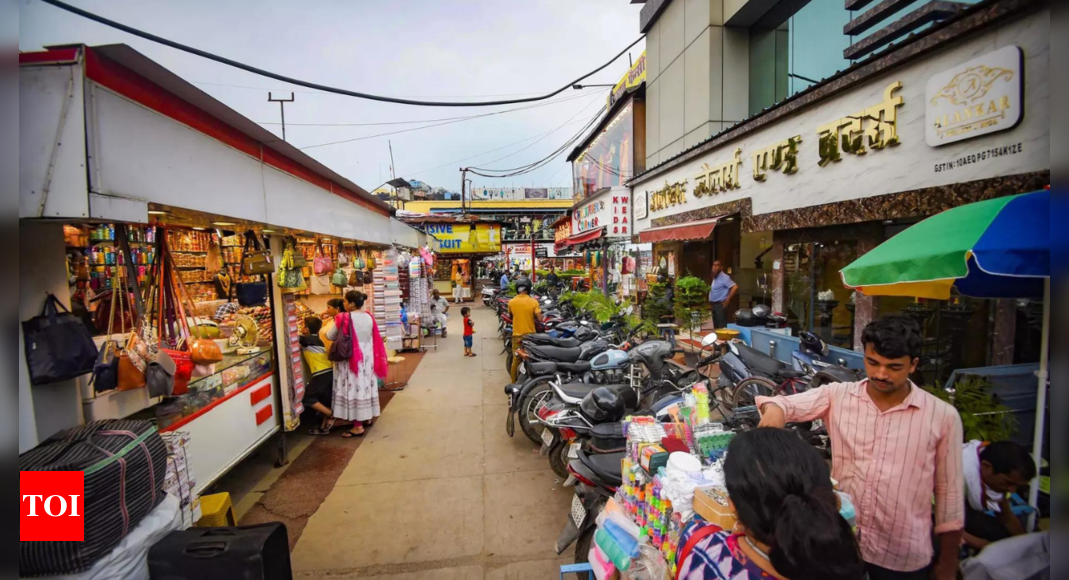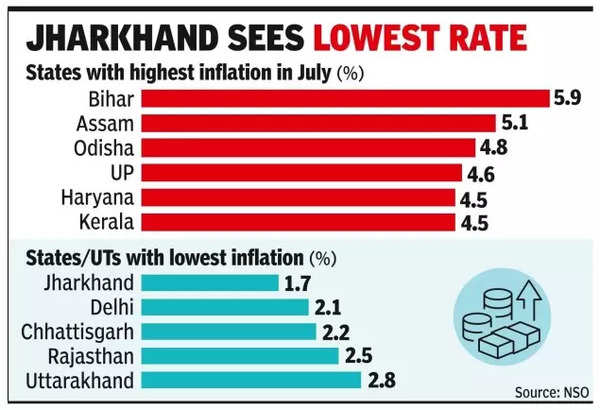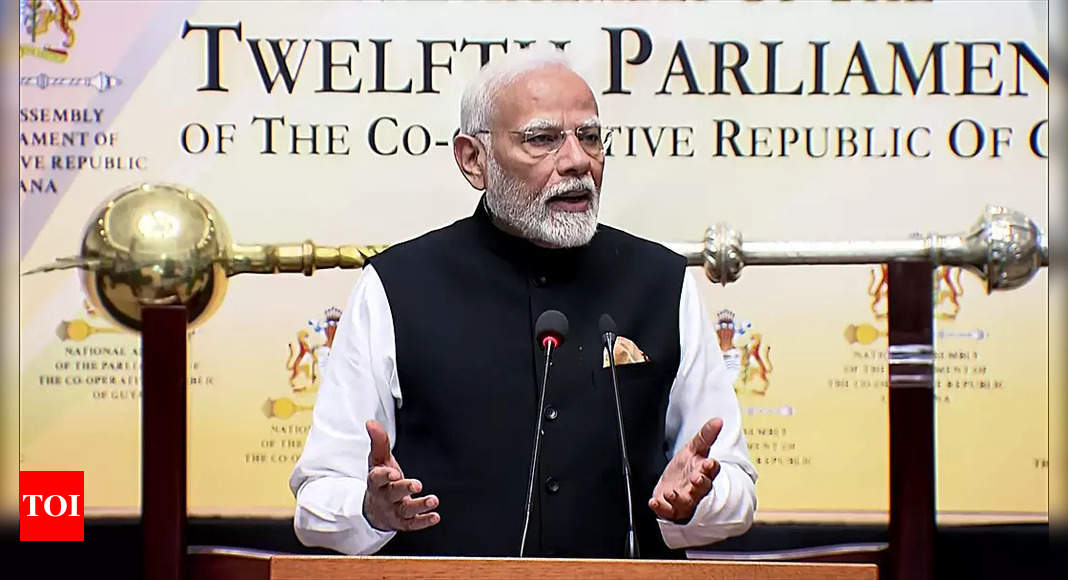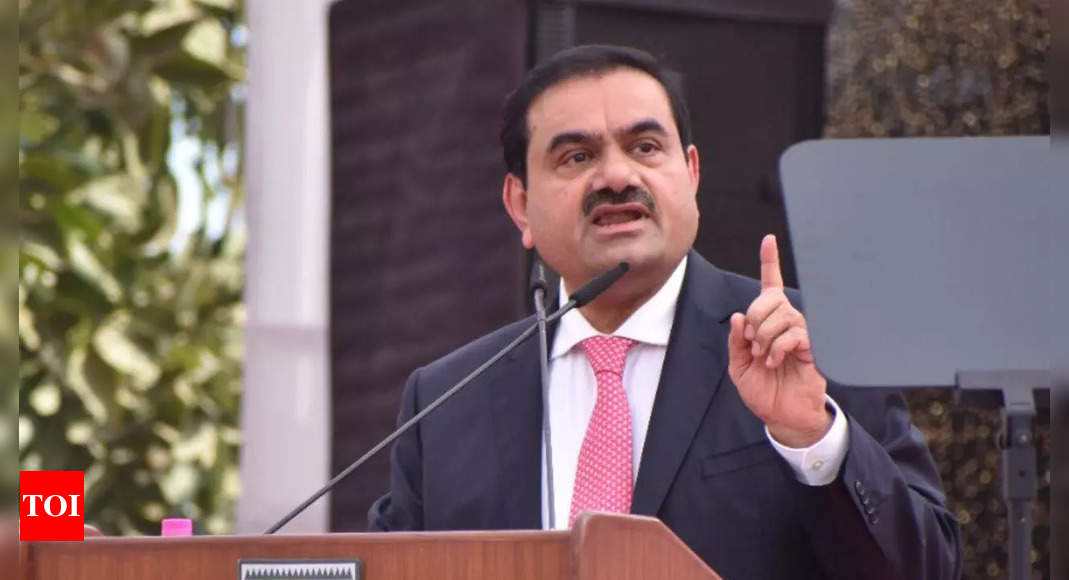
Odisha, which had been witnessing stubborn price pressures, posted a rate of 4.8%, while Uttar Pradesh had 4.6%. Haryana and Kerala both recorded 4.5% inflation rates.
Out of the 22 states and Union territories for which data is published, 20 of them had an inflation below 5%.This is below the Reserve Bank of India’s upper tolerance band and a major relief from the inflationary pressures witnessed during past few months.
Latest data released by the National Statistical Office on Monday showed retail inflation softened to a near 5-year low in July, led by a moderation in vegetables, fruits and spices, and the impact of a statistical high-base effect.

Retail inflation, as measured by the consumer price index, slowed to a 59-month low of 3.5%, lower than the 5.1% in June and below the 7.4% recorded in July last year. Rural inflation was at 4.1%, while urban was at nearly 3%. The food price index was at 5.4%, lower than the 9.4% in June.
States have been witnessing a variation in their inflation rates and also the rural-urban rates.
The Economic Survey for 2023-24 has said the rural consumption basket has a much higher weightage of food items (47.3%) than the urban (29.6%). “Hence, in the last two years, states that witnessed elevated food prices also experienced higher rural inflation. It is also found that the inter-state variation calculated through standard deviation is higher in rural than urban inflation. Besides, states with higher overall inflation also tend to exhibit a wider rural-to-urban inflation gap,” according to the survey.
Experts expect RBI to cut interest rates, but it would depend on trajectory of food prices. “With comfort on growth in the backdrop, we continue to expect the MPC to maintain its anti-inflation posture until there is clarity on food inflation risks. A pivot towards easing is likely in the third quarter of FY25. We foresee 75 basis points of cumulative monetary easing in this cycle, out of which, 50 basis points could be delivered in the second half of FY25,” economic think tank QuantEco said in a note.







